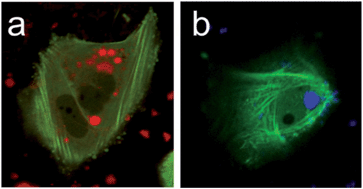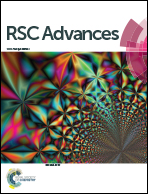Silicon nanocrystals and nanodiamonds in live cells: photoluminescence characteristics, cytotoxicity and interaction with cell cytoskeleton†
Abstract
The number of newly developed nanomaterials is steadily increasing but only a few are suitable for applications in biology. These nanomaterials are often made from harmful compounds and there is no convenient technique to remove them from the body after application. This study is focused on silicon nanocrystals and nanodiamonds, which are two promising nanomaterials for bio-applications. Silicon nanocrystals (Si-NCs) are exceptional since they provide several desired properties: low cytotoxicity, suitability for chemical activation, efficient photoluminescence, and bio-degradability. All these parameters promote application of Si-NCs in living organisms and even human medicine. Nanodiamonds (NDs), on the other hand, are non-biodegradable which limits their use to mostly long term in vitro studies. However, when using these nanomaterials one needs to address the effect of accumulation and aggregation of such materials in cells and how it contributes to the overall cytotoxicity. Here, we present studies on the interaction of two promising nanomaterials Si-NCs and NDs with actin structure of mammalian cells, evaluation of their cytotoxicity by various methods, and observation of single nanoparticle luminescence spectra within living cells. According to our results Si-NCs are more promising for application in nanomedicine compared to NDs.


 Please wait while we load your content...
Please wait while we load your content...